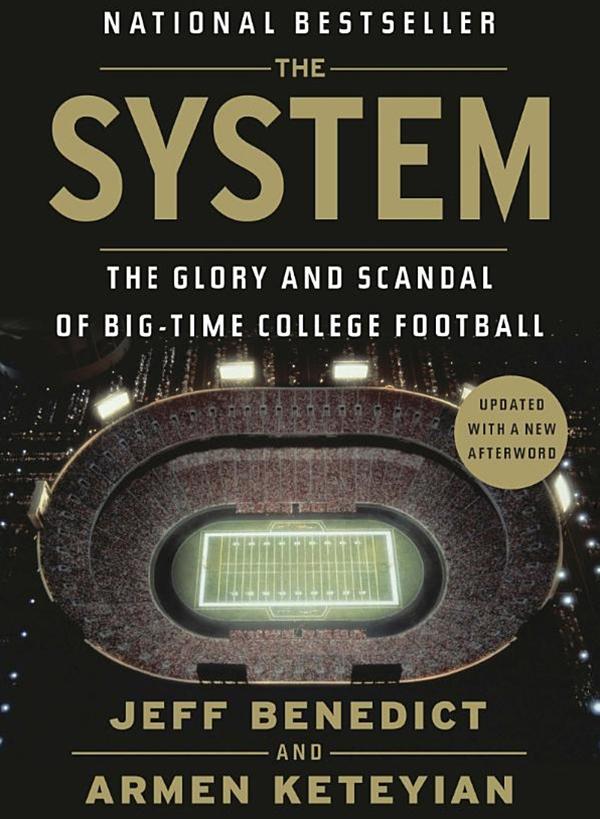At least not according to “The System: The Glory and Scandal of Big-Time College Football.” In the book, co-authors Jeff Benedict and Armen Keteyian demonstrate how money is king within the multimillion-dollar sport. The co-authors put America’s beloved sport under the microscope, showing just how much risk and reward it takes to become a successful college football team.
Benedict and Keteyian show how morals, ethics and money blur together behind the lines of some of college football’s most well-known teams. As the authors pull back the curtain on some of the sport’s biggest scandals and glories, it’s easy to see just how fast the scales can be tipped for a team.
The co-authors spin “the system” on its head and provide viewpoints from almost every individual wrapped up in the industry. The behind-the-scenes look at college football includes interviews and stories from coaches, athletic directors, directors of football operations, players, boosters, tutors, NCAA investigators and more.
The book explains the business and the money behind college football, including the hiring (and firing) of the nation’s top football coaches and athletic directors, the sport’s tricky relationship with boosters and the methods it takes to garner a million-dollar fan base.
A running thread throughout about Washington State University coach Mike Leach demonstrates how a breakdown of communication and trust led to his firing at Texas Tech and the fallout that followed. With Leach and other coaches, readers get an inside look at how college presidents, college athletic directors and college football coaches interact.
A chapter simply titled “The Booster” and a phrase at its beginning, “what $248 million will buy you,” break down boosters and the NCAA penalties that follow a booster’s often controversial relationship with a team. Benedict and Keteyian explain while most boosters are harmless, a striking one percent – the wealthy percent – gets its own category. “Power brokers,” “jock sniffers,” “builders” and “turbo boosters” all find their home in these categories.
In “The Brand,” the authors demonstrate the importance of branding in college football through Michigan’s 2012 hiring of Dave Brandon, the former CEO of Domino’s Pizza, as their athletic director. By trying to achieve a “wow factor” and revive Michigan’s dormant program, “the brand” emerged. Soon, the block “M” was everywhere and by the end Michigan made a name for itself in college football.
At times, the scandal outweighs the glory. At least six chapters in “The System” address sexual assault, the blurry lines between athletes and their counterparts, blatant special treatment, payment to athletes and more.
Benedict and Keteyian illustrate how quickly decisions made by student athletes, and even coaches, can cause their own downfall. Many scandals never see the light of day. The ones that do show how student athlete treatment can lead to a sense of privilege that’s dangerous for all involved. NCAA investigations are conducted and scholarships are lost due to actions off the field.
The reality is summarized best by Leach when he said, “People want change and accountability around here. Then you do it and they don’t want it.”
Reading “The System” can bring a new outlook and, hopefully, a sense of appreciation to college football fans. Through Benedict and Keteyian’s analysis into the sport, a reader can quickly see it’s never just championship rings and trophies that matter.









